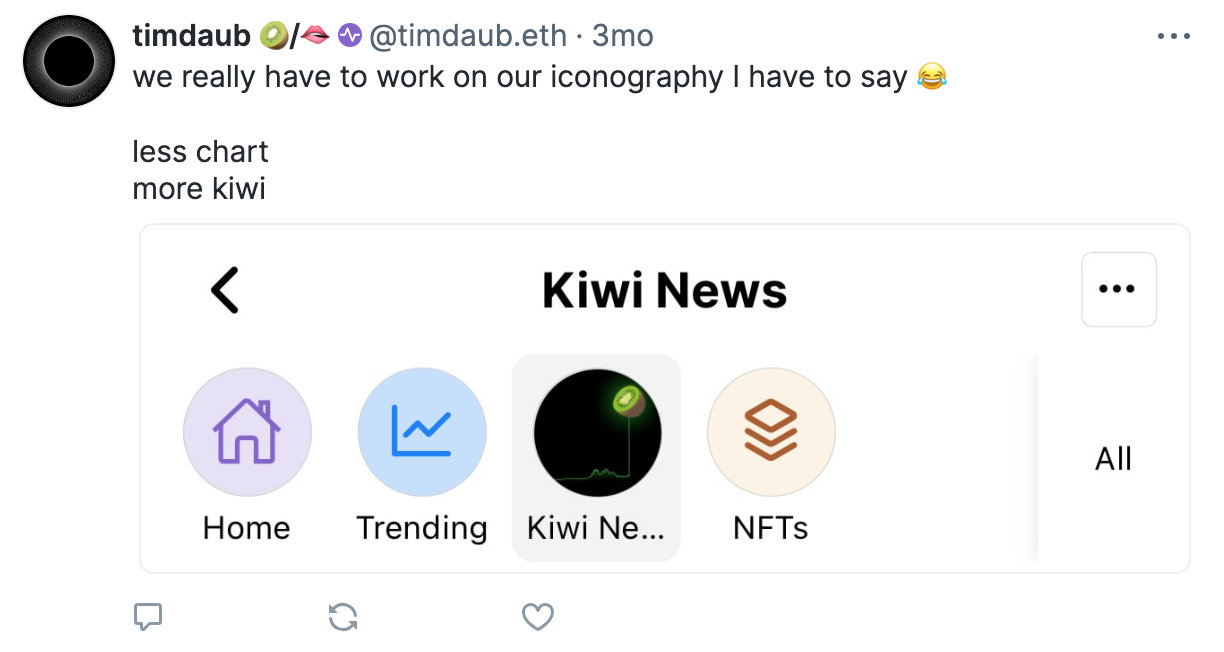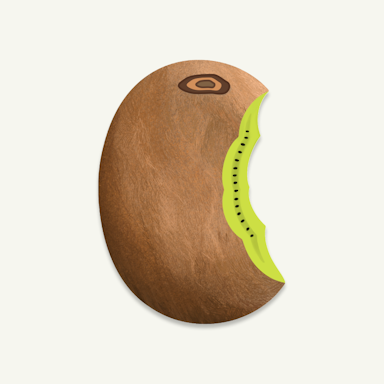
Kiwi Farcaster Channel story
You might not know it, but Kiwi was one of the first channels on Farcaster. It was June and when Dan told us we were going to get a piece of our Farcaster real estate, we were excited!
We had an ambitious vision of what we wanted to achieve:

And so we started… We asked our users for feedback and ideas, we posted some links to kickstart discussion and shared our newest features.
Since we were one of the few channels, we got some initial engagement, and then… it died.
We quickly learned that our users preferred to discuss the product on our Kiwi holders' Telegram chat. We got some comments, but much fewer than when we shared the links on our personal profiles. Features were doing quite okay though the engagement was still like 4-6 likes the most.
We also knew that the channels-feed algorithm was going to change, so we parked this idea and focused on other things. And when we returned, we decided to do it differently.
Channels are products
The main insight behind the change is that channels are products. We might argue they are media products (or to be precise: social media products), but they behave like products indeed.
You, as a channel reader, open the channel with some intention and a Job to Be Done.
The intention is typically: “I want to read some content on the subject X” or “I want to socialize with people who are Y.”
If you go to f/dev, you want to discuss dev-related stuff with devs. If you go to f/LA, you want LA-related stuff with LA people, and so on.
But there’s more to that. Your expectations might not only be about the subject but also about the format.
If you look at f/memes, all the things we post there are just images or gifs. You can share your thoughts there but nobody will care. Give the people what they want - memes!
So, we applied the same philosophy to Kiwi. We knew that our users expected nothing but top-quality crypto links directly on Farcaster. So, instead of betting on socialization, which was already served by our Telegram channel, we started posting links.
Soon after, our channel began to grow!
Channeling our advice…
It took some time to learn how to properly use our channel. And there’s definitely tons of lessons ahead of us. But if I had to share some piece of advice we’d say:
“Understand what the expectations of channel subscribers are. What type of content, people, format, and vibes are they looking for. And then deliver it.”
So, it’s not that different from the role of a Product Manager who needs to understand their end users and deliver the right experience.
PS: What’s interesting is that with Kiwi we basically created this mini-product (a bot that sends top-quality crypto links directly to your feed) inside the Farcaster product.
And if we look at channels from a “product inside the product” POV, we can imagine FC channels one day having features like Telegram. With in-channel bots that add new functionalities inside Farcaster - from a “virtual coffee pairing” through social betting up to text-based games.
This is a potentially interesting design space to explore.

